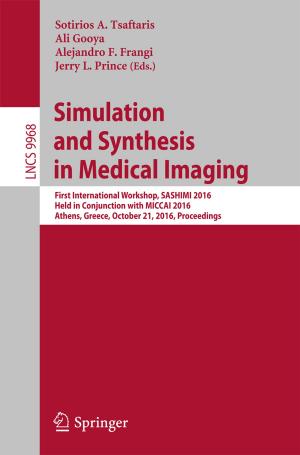OCT in Central Nervous System Diseases
The Eye as a Window to the Brain
Nonfiction, Health & Well Being, Medical, Specialties, Ophthalmology, Internal Medicine, Neurology| Author: | ISBN: | 9783319240855 | |
| Publisher: | Springer International Publishing | Publication: | March 30, 2016 |
| Imprint: | Springer | Language: | English |
| Author: | |
| ISBN: | 9783319240855 |
| Publisher: | Springer International Publishing |
| Publication: | March 30, 2016 |
| Imprint: | Springer |
| Language: | English |
This book reviews recent important advances in the use of optical coherence tomography (OCT) in order to analyze neurodegeneration within the retina through the quantification of axonal loss. Detailed information is provided on the role of OCT as a promising tool for the evaluation of disease progression in numerous neurodegenerative disorders and as a biological marker of neuroaxonal injury. The disorders considered include multiple sclerosis, Parkinson’s disease, Alzheimer’s disease, intracranial hypertension, Friedreich’s ataxia, schizophrenia, hereditary optic neuropathies, glaucoma, and amblyopia. Individual chapters are also devoted to OCT technique, new OCT technology in neuro-ophthalmology, OCT and pharmacological treatment, and the use of OCT in animal models. By documenting the ability of OCT to provide key information on CNS diseases, this book illustrates convincingly that the eye is indeed the “window to the brain”.
This book reviews recent important advances in the use of optical coherence tomography (OCT) in order to analyze neurodegeneration within the retina through the quantification of axonal loss. Detailed information is provided on the role of OCT as a promising tool for the evaluation of disease progression in numerous neurodegenerative disorders and as a biological marker of neuroaxonal injury. The disorders considered include multiple sclerosis, Parkinson’s disease, Alzheimer’s disease, intracranial hypertension, Friedreich’s ataxia, schizophrenia, hereditary optic neuropathies, glaucoma, and amblyopia. Individual chapters are also devoted to OCT technique, new OCT technology in neuro-ophthalmology, OCT and pharmacological treatment, and the use of OCT in animal models. By documenting the ability of OCT to provide key information on CNS diseases, this book illustrates convincingly that the eye is indeed the “window to the brain”.















